Patch Budding Citrus Trees – Bud Grafting a Fruit Cocktail Tree
Patch budding is an easy grafting technique that can be used to either replace or add a new fruit variety to an existing tree. I have used patch budding to graft citrus trees and have found that it gives a high success rate. Patch budding is a popular method for topworking citrus trees to new varieties in Spain. I have found that it also works very well as a technique for adding new varieties to an existing citrus tree to make a multi-variety citrus cocktail tree.
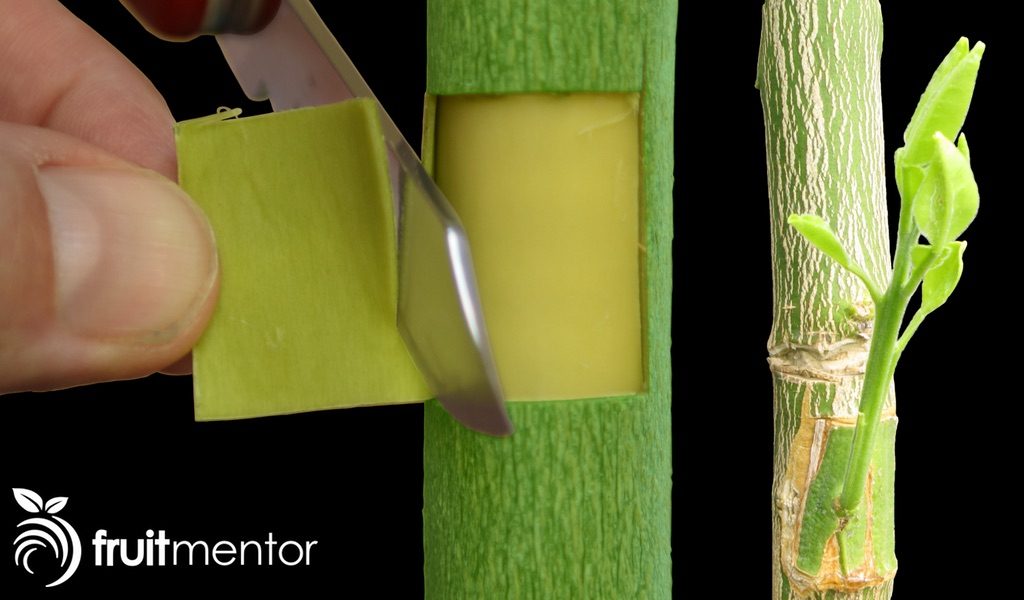
An advantage of grafting citrus with the patch bud compared to T-budding and chip budding is that the larger surface area of the graft makes it less likely to be absorbed by a fast-growing target branch before the buds sprout. A disadvantage of patch budding compared to scion grafting techniques such as the cleft graft and the bark graft is that the buds can be slow to start growing. Although the particular graft demonstrated in this tutorial is of a Mato Buntan pummelo, I also found that patch budding works well for oranges, lemons, and limes; I expect that it would work well for any type of citrus.
Patch Budding Citrus Trees – YouTube Video
In addition to this step-by-step tutorial, I have also made a YouTube video (see below) showing the patch budding of citrus trees.
Citrus Budwood from a Disease-free Source
Citrus cuttings have the potential to spread tree-killing diseases. It is often not apparent when a tree is infected with a fatal disease. This makes the source of citrus budwood for grafting very important.
In California where I live, we now have both exotic diseases that kill citrus trees and also the insects that spread the diseases. The situation is so severe that it now against the law in California to graft with cuttings taken from backyard citrus trees. To save our trees from deadly disease, hobbyists in California no longer swap citrus cuttings with friends. We now instead order our budwood at a nominal cost from the Citrus Clonal Protection Program (CCPP), a program that exists to provide disease-free budwood for the grafting of citrus trees.
The CCPP will ship budwood anywhere in the world where the local government allows it. Many citrus growing regions where CCPP budwood is not allowed have their own disease-free citrus budwood programs. Here I have created a web page that lists some other programs: Citrus Budwood Programs.
The below YouTube video goes through in detail the process of setting up an account and placing a budwood order with CCPP.
Disinfecting Grafting Tools
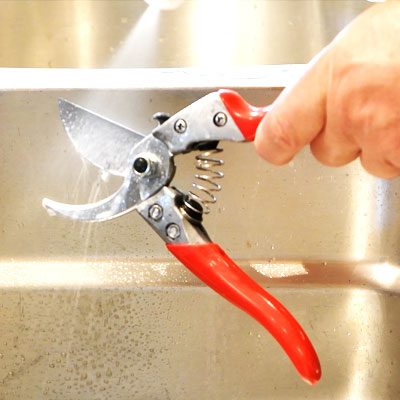
In order to both maximize the probability that the graft lives and also to prevent the spread of disease from tree to tree, it is important to disinfect grafting tools between grafts. To learn more about disinfecting grafting tools, please see the following link: Disinfecting Grafting Tools.
When to Graft Citrus using the Patch Bud
In order for the patch bud to work, it must be performed during a time of the year when the tree is actively growing and thus the bark is slipping and can be peeled off easily. For this graft the bark must be slipping on both the scion and also on the target branch. In my climate, this graft can be performed in summer and in late spring.
Choosing the Bud
It is easiest to cut the patch from a round part of a budstick. To increase the chance of a successful graft, it is possible to cut a patch with more than one bud. For this demonstration I cut a patch with a single bud using an angular part of a scion. I had already grafted using the more circular parts of these budsticks. It was more difficult, but I was still able to succeed using a more angular-shaped portion of the scion.

Cutting the Patch
First Cut
I make a first cut by pressing the knife into the scion above the bud. Then I rotate the scion 360 degrees to cut all the way around the scion.
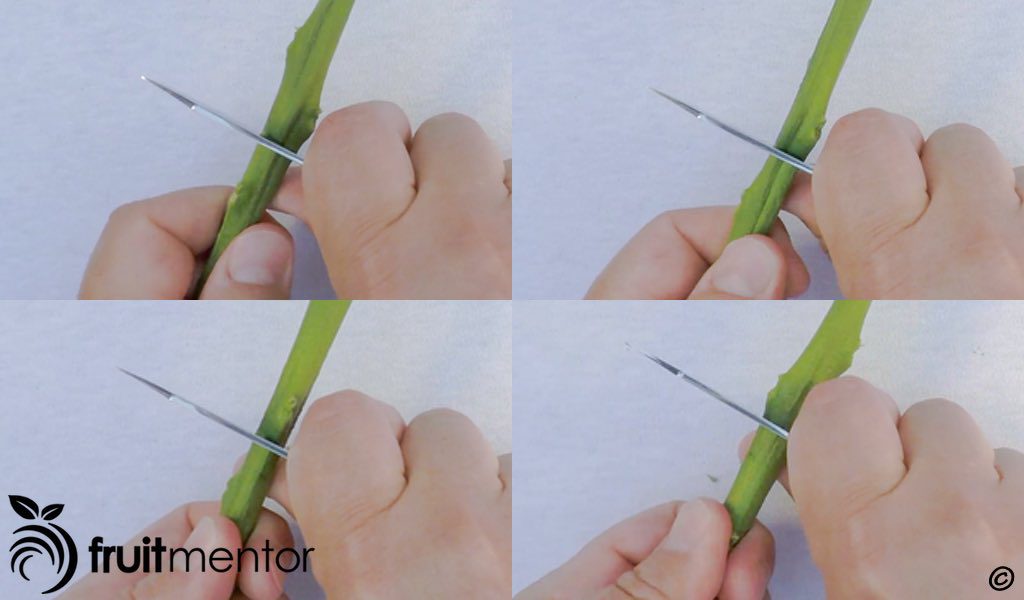
Second Cut
The second cut is similar to the first cut, but below the bud that I would like to cut out.
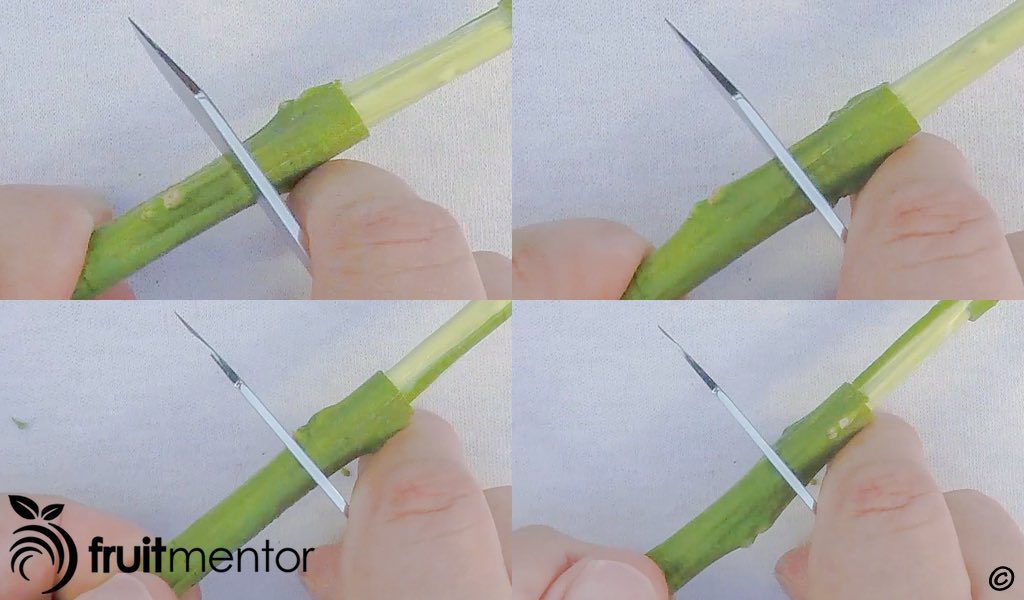
Third Cut
Next I turn the budstick around and make a third cut on the opposite side of the budstick from the bud. The third cut is perpendicular to the first and second cuts and joins them.

Removing the Patch
To remove the patch from the budstick, I use the bark lifter of my grafting knife to peel the bark back.

Preparing the Target Branch
To prepare the target branch to receive the graft I place the patch on the target branch and use it as a guide to make cuts below and above where the patch will be grafted to the target branch. The distance between the first two cuts does not need to be precise. The patch will fit the target branch more easily if the distance between the cuts is a little bit larger than the length of the patch. Next I make a third perpendicular cut joining the ends of the first two cuts.
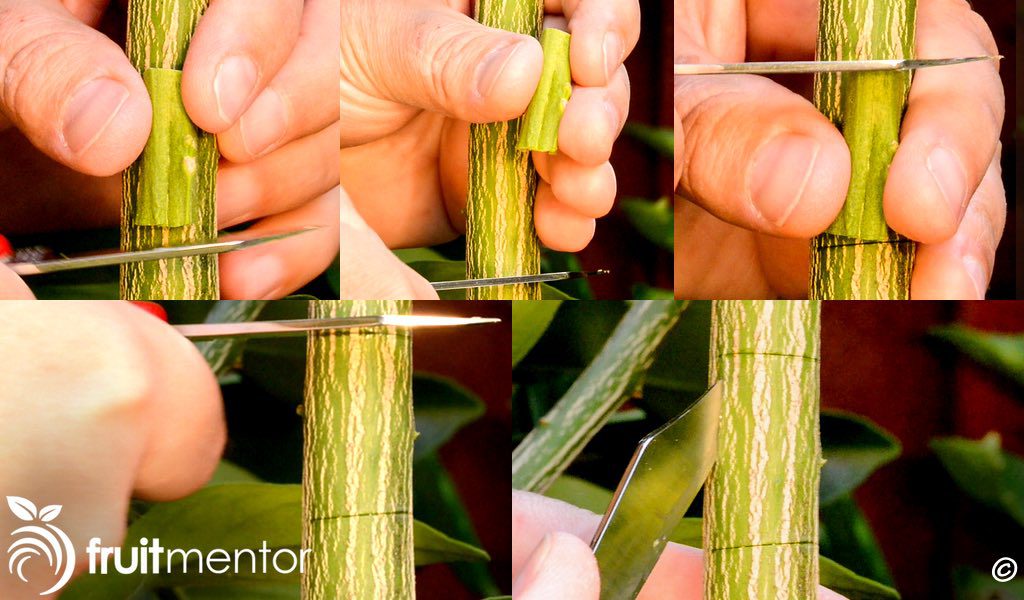
Removing the Bark
Next I use the bark lifter from my grafting knife to peel the bark back. I then cut the bark to make room for the patch.

Putting the Patch Bud in Place
Next I place the citrus patch bud onto the target branch, lining up the patch on the bottom and on one side. As with any citrus grafting technique, it is important to connect the cambium of the patch to the cambium of the target branch. Because the cambium layer is between the bark and the wood, the patch bud gives ample contact of the cambium.
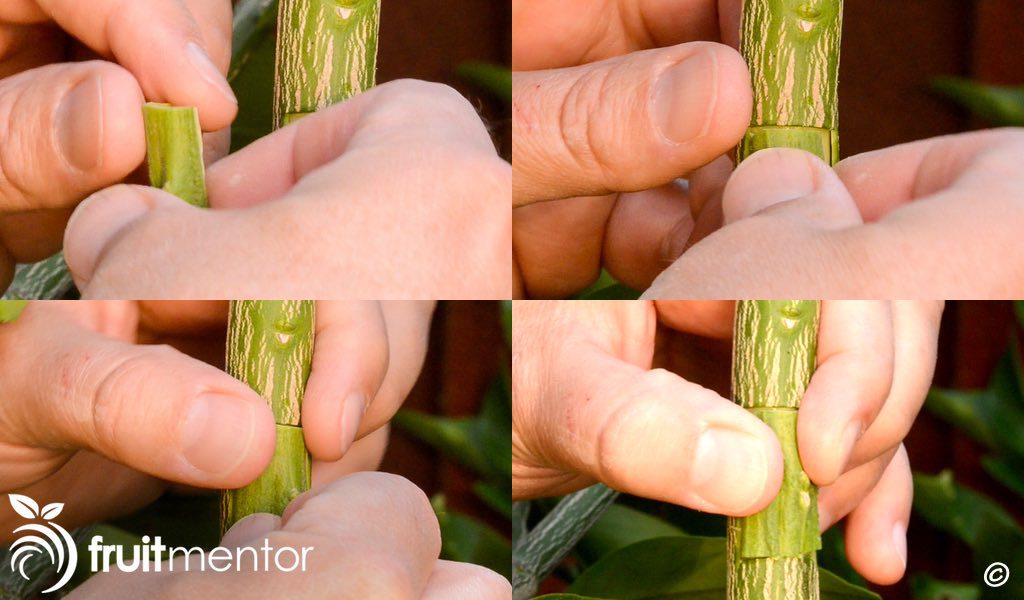
Wrapping the Citrus Patch Bud
Next I wrap the graft tightly to ensure cambial contact. The cambium touching cambium is slippery and it helps to hold the bud to keep it from slipping while wrapping it. Vinyl tape makes a good wrapping material because it is possible to stretch it and wrap it very tightly without breaking it. Parafilm would break too easily. I used 1/2 inch vinyl tape because I had it on hand. It worked well for a small number of grafts, but a grafter with a large number of grafts to perform could save time by using a wider wrapping material.
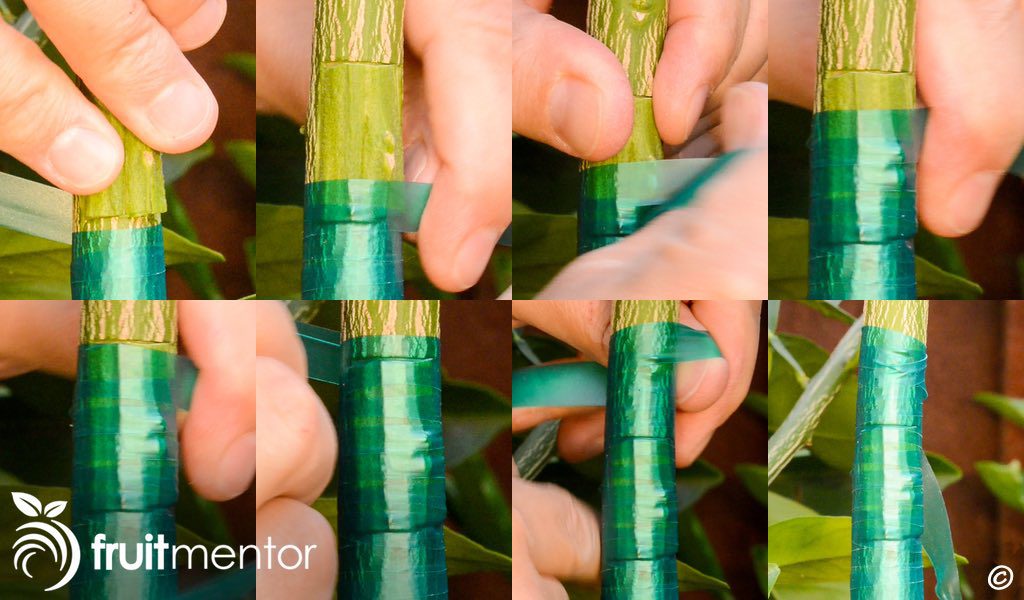
Protecting the Graft with Aluminum Foil
Because the best time to graft citrus trees is during warm weather, I wrap the graft with aluminum foil to protect it from the sun and keep it from getting too hot and drying out.
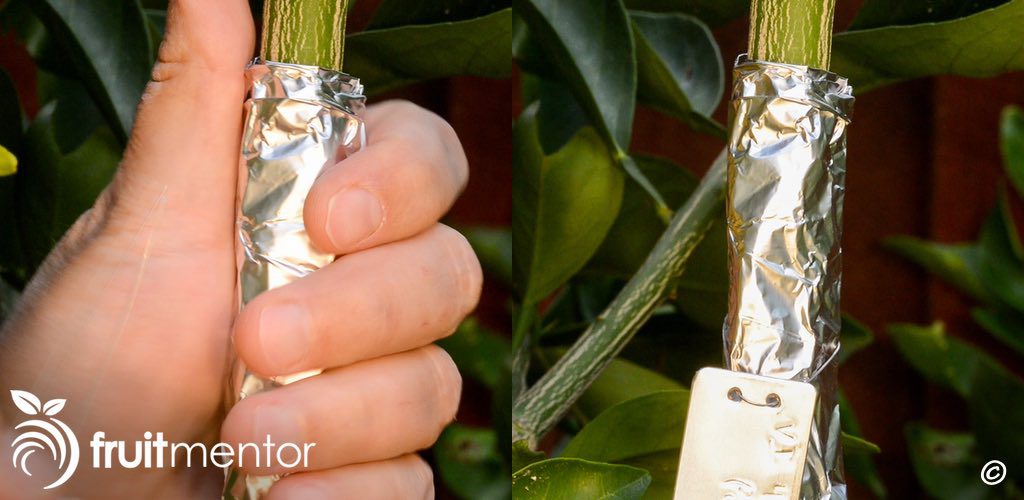
Unwrapping the Graft
After a three week healing period I remove the aluminum foil and the vinyl tape.
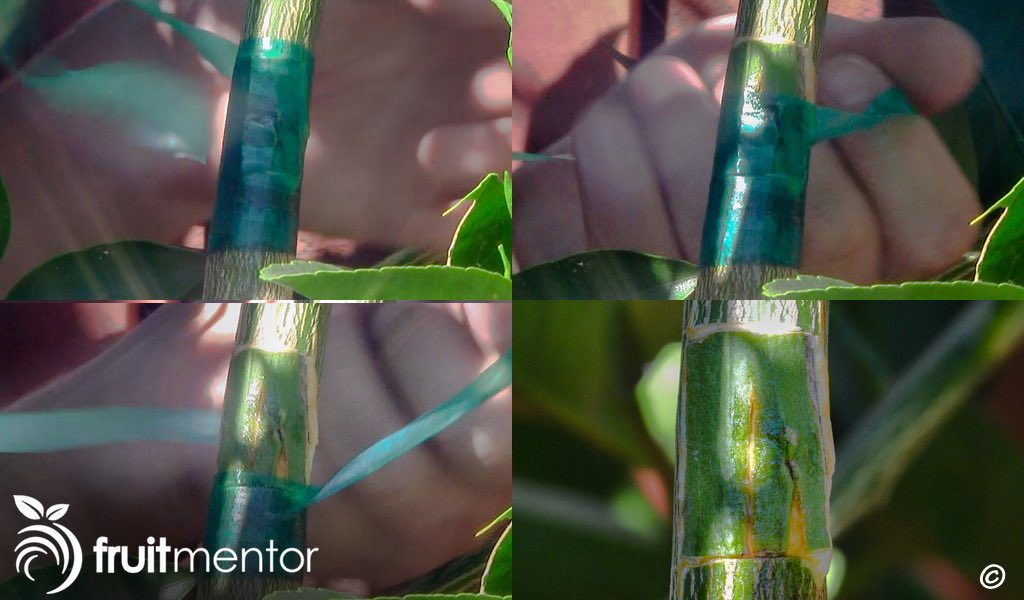
Breaking Apical Dominance so that the Citrus Bud Graft will Grow
A phenomenon called apical dominance governs the growth of citrus buds. Natural hormones from the buds at the ends of citrus branches prevent buds lower down from growing. In order for the patch budded graft to grow, the effect of these hormones must be overcome.
Removing the Top Two-Thirds of the Branch
The first step to overcoming apical dominance is to cut off approximately two-thirds of the branch above the patch bud.

Cutting a Notch Above the Bud
The second step to overcoming apical dominance is to remove a portion of the bark above the bud. I cut a notch halfway around the branch. The bark on the opposite side of the branch from the bud is left intact.
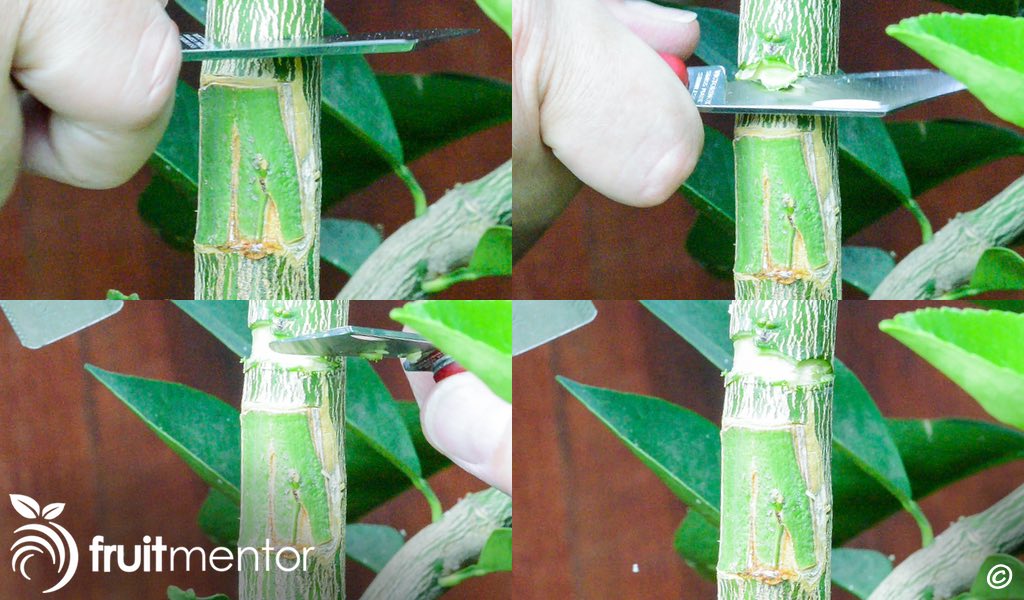
Citrus Patch Bud Graft Growing
Of the many citrus patch bud grafts that I performed, most of them were very slow to start growing. This particular graft was the first to start growing. The growth in the below photos happened within a few months of unwrapping the graft. I performed the patch bud grafts in late spring and most of them waited until early spring the next year to start growing.

Citrus Cocktail Tree with Patch Bud Grafts Growing
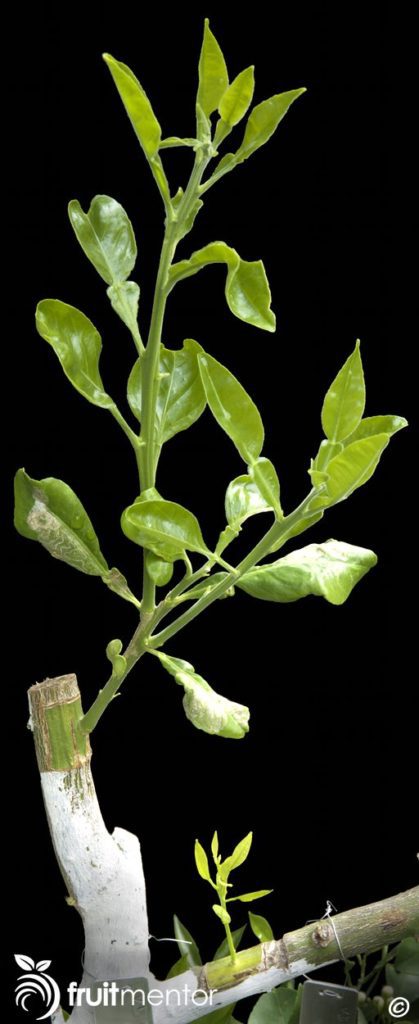
The below photo shows two patch buds growing on my Cara Cara navel orange tree the spring following the grafting. A second flush of growth is occurring on the Mato Buntan Pummelo patch bud above. The patch bud on the bottom is an Avani Tardivo mandarin orange and had just started growing.
Conclusion
I found that patch budding works well as a technique for adding new varieties to an existing citrus tree to make a multi-variety citrus cocktail tree. Patch budding of citrus gives a high success rate, but the grafts may take a long time to start growing when making a cocktail tree. In the presence of deadly citrus diseases that are not readily apparent, grafting a citrus cocktail tree using cuttings from an untested source is a risky activity that can spread disease and kill trees. By ordering registered disease-free citrus budwood from a registered budwood source, it is possible to graft a citrus cocktail tree without the risk of spreading deadly diseases.
Save Trees by Sharing
Please share this article with anyone that you think may be interested in grafting citrus. Knowledge of the importance of using a registered disease-free budwood source when grafting citrus will help to prevent the accidental spread of deadly citrus diseases and will save trees.
Resources for Californians
Please visit CaliforniaCitrusThreat.org for more information on how to stop the spread of deadly citrus disease.
California Law Regarding Citrus Propagation
In California, the collection of any citrus propagative materials, including budwood and seeds, from non-registered sources is illegal. Any citrus trees grown or grafted in California must come from source trees registered with either:
- The Citrus Nursery Stock Pest Cleanliness Program, administered by the California Department of Food and Agriculture, or
- The Citrus Clonal Protection Program, located at the University of California at Riverside.
Funding
This article was funded by a grant from California’s Citrus Research Board.

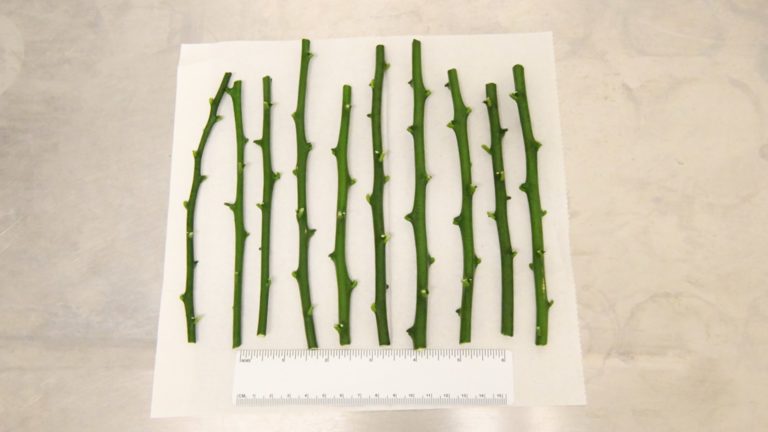
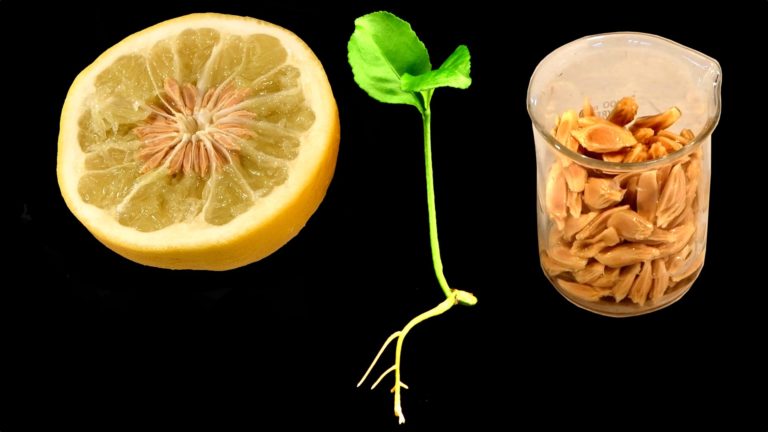
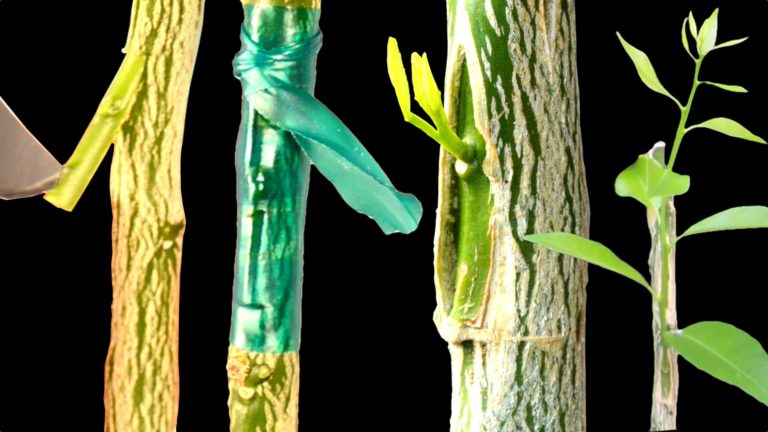
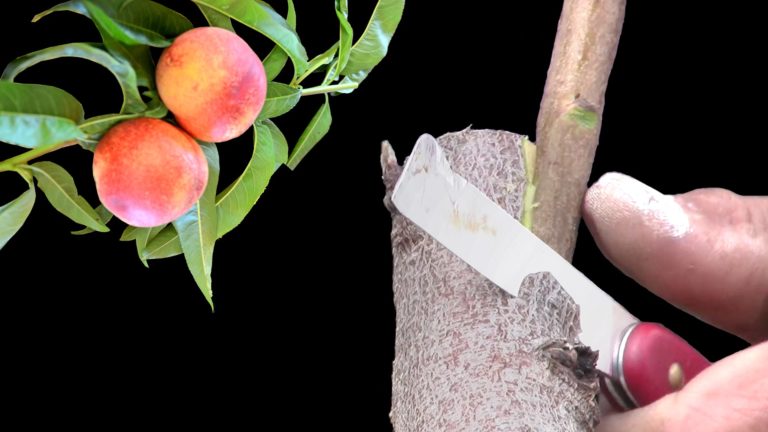
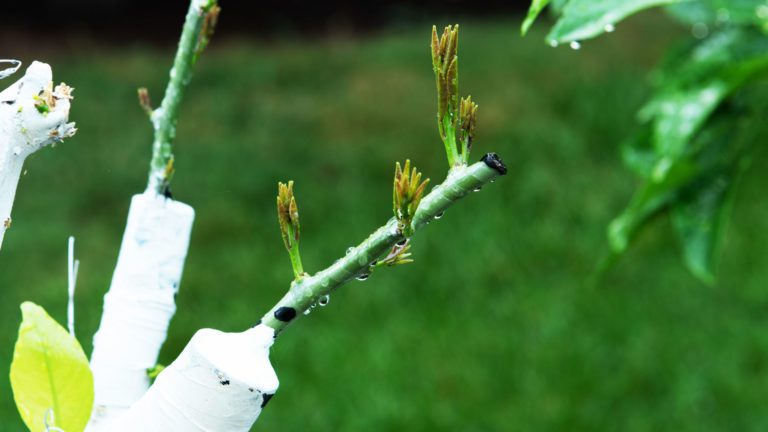
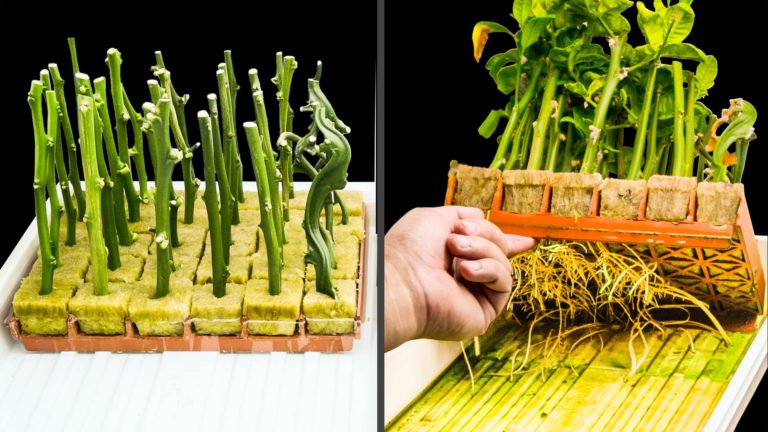
Dan, as usual, you have produced an excellent and easy to follow article.
And, as usual, you show great detail and the end result.
Thanks for your hard work. I’ll be trying this type of graft.
I have been using your chip graft with great success.
I bought a grapefruit tree at Costco and now have a Pixie Tangerine chip bud that is still green. I’m waiting for it to sprout.